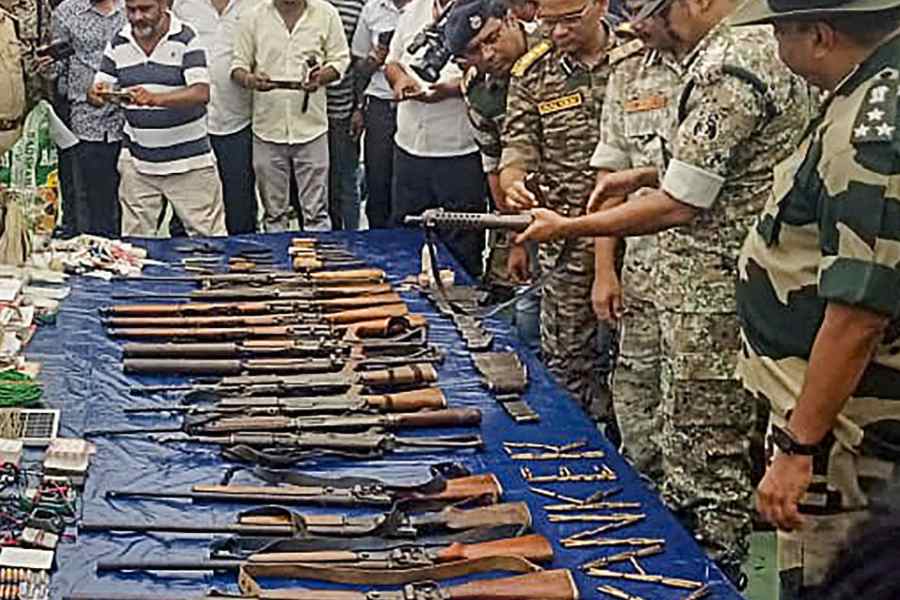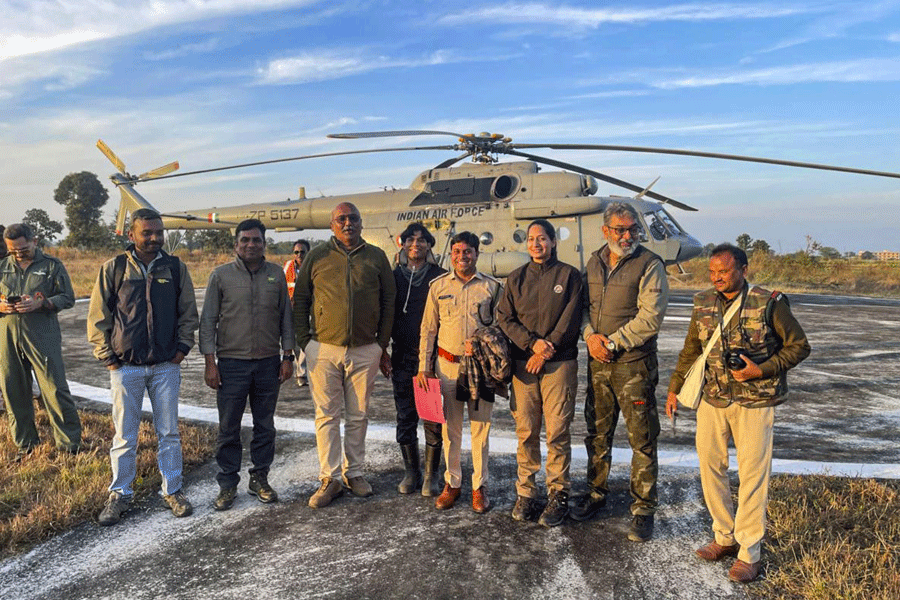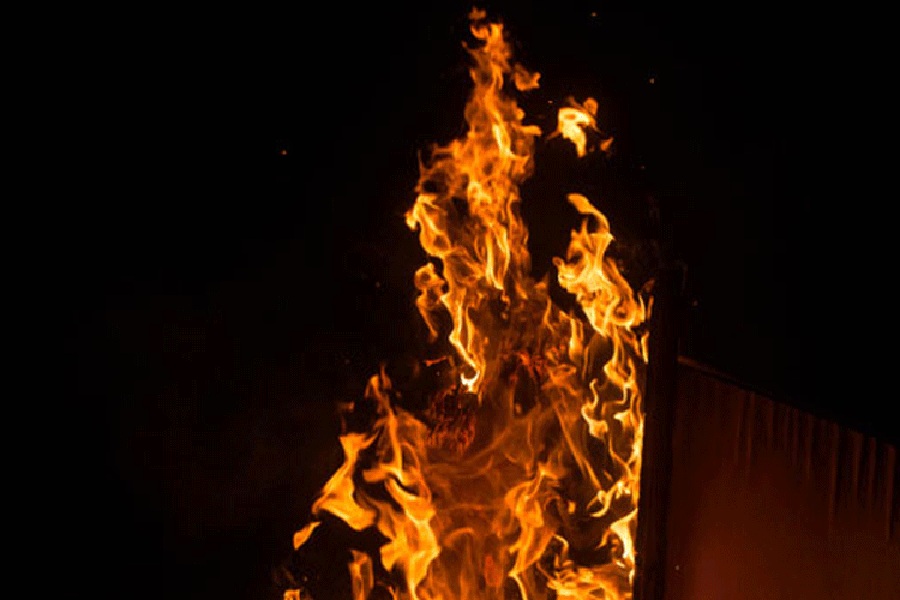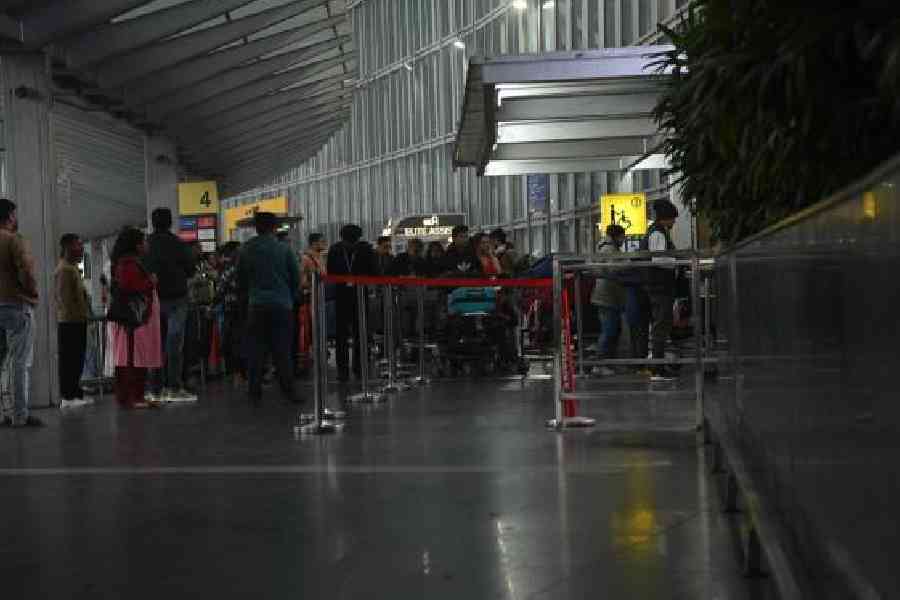Maoists in Chhattisgarh have changed their strategy following heavy losses and are increasingly using remote-controlled explosive devices, including a kind involving beer bottles, against the security forces, sources in the security establishment said on Sunday.
“According to the latest intelligence, the rebels are now focusing more on unleashing pressure-cooker, remote-controlled IEDs (improvised explosive devices) on security personnel inside forests in Chhattisgarh rather than engaging in gunfights,” an Intelligence Bureau official told The Telegraph.
Faced with a renewed anti-insurgency offensive, the Maoists are also using the foxhole technique. They dig holes and fill them with stones to avoid detection during anti-mine operations. They later place explosives in these holes when they intend to trigger a blast, the official said.
Sources said an alert had been sounded in Chhattisgarh and Jharkhand following the latest intelligence reports, a series of blasts and the recovery of weapons, including a device rigged with beer bottles and a small antenna.
Under the Tactical Counter Offensive Campaign undertaken by the Maoists during summer, they usually attack the security forces by laying traps inside jungles.
“Recently, at least 10 booby traps in Chhattisgarh and Jharkhand were uncovered by the security forces,” a CRPF official said.
Last week, the paramilitary force recovered a 5kg pressure-cooker remote-controlled IED from Bijapur. The device, kept under a tree, was fitted with two empty beer bottles to inflict glass shard injuries on the troops. It had a small wire-connected antenna to facilitate detonation from a distance, the CRPF official said.
The CRPF’s counter-IED team detected and defused the device after several hours.
Another such IED, weighing around 50kg and buried underground, was recovered by the CRPF from under a bridge in Bijapur in January.
Remote-controlled IEDs are considered more powerful than pressure-triggered or command IEDs as they can be detonated from a distance.
In January, eight security personnel and their driver were killed in Bijapur when the Maoists used a device to blow up their vehicle. The victims were returning from an operation when the blast targeted their SUV in Bastar, a Maoist hotbed.
Last week, a CRPF sub-inspector was killed in a similar blast in Jharkhand’s West Singhbhum district. On March 5, a CRPF assistant commandant and two other personnel were injured in an IED blast.
Sources said eight security personnel had lost their lives in 78 IED blasts in Chhattisgarh last year.
The security forces have launched an anti-Maoist offensive in various parts of Chhattisgarh, with Union home minister Amit Shah resolving to eradicate Left-wing extremism from the country by March 31 next year.
Last week, 30 Maoists and a jawan were killed following intense gunfights in the Bastar region of southern Chhattisgarh, raising the rebel death toll above 100 since January.
Sources said drones, or unmanned aerial vehicles (UAVs), were being used for reconnaissance and surveillance, with real-time images taken of the “liberated zone” in Chhattisgarh to plan attacks and to protect the troops from possible ambushes inside the jungles.
Amid the renewed counter-insurgency offensive, Maoist strongholds are shrinking fast in Chhattisgarh. “They have been pushed to the wall and are running short on arms and ammunition. They are now relying on IEDs to launch counter-attacks,” a home ministry official said.
Security forces have been moving deeper into the Maoist bastions of Bastar and setting up forward bases and camps as part of an area-domination exercise, he said.
He added that 300 new forward operating bases and camps had been set up in areas once considered Maoist “liberated zones”.
These forward bases have restricted the movements of the Maoists and helped the forces conduct counter-offensives inside the rebel fortress.
Bastar, Bijapur, Narayanpur, Kanker, Sukma, Dantewada and Kondagaon are the seven districts hit the worst by the Maoist insurgency in Chhattisgarh.










